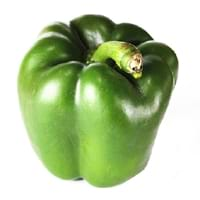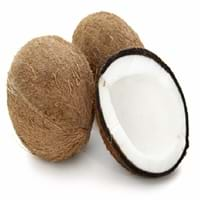Health Benefits
Arthritis treatment, Cancer prevention, Heart care
Acidity treatment, Acts as natural antibiotic, Anti-oxidant properties, Aphonia treatment
General Benefits
Anti oxidant properties, Anti-inflammatory properties, Controls blood pressure, Digestive aid, Eye care, Helps in weight loss, Maintains healthy cholesterol level, Strengthens bones
Anti-inflammatory properties, Body hydration, Boosts immune system, Controls blood sugar levels, Digestive aid, Fights against infections, Flu treatment, Healing of wounds, Helps in weight loss, Maintains healthy cholesterol level
Skin Benefits
Anti-aging benefits, Treatment of skin diseases
Anti-aging benefits, Heals sunburn, Hydrates skin, Reduces wrinkles, Skin rejuvenation, Skin revitalization, Treatment of skin diseases
Hair Benefits
Prevents hair loss, Promotes longer and healthier hair, Regulates hair growth
Promotes longer and healthier hair, Regulates hair growth, Rejuvenates scalp, Shiny hair, Treatment of dandruff
Allergy Symptoms
Abdominal pains, Coughing, Eczema, Headaches, Hives, Redness of eyes, Sneezing, Swelling, Swelling of mouth, tongue or lips, Watery eyes, Wheezing
Abdominal pains, Breathing difficulty, Itching in tongue and other parts of mouth, Nasal congestion, Nausea, Runny nose, Vomiting
Side Effects
Allergic reaction, Mouth irritation, Throat irritation
Allergic reaction, Indigestion, Weight gain
Best Time to Eat
Along with meal, Don't consume at night and before bed, Don't eat after meal, Morning time (before lunch)
Along with meal, Best if taken as a breakfast (or empty stomach), As a snack in the late afternoon, Morning time (before lunch)
Vitamin B5 (Pantothenic Acid)
Vitamin C (Ascorbic Acid)
Vitamin K (Phyllochinone)
Calories in Fresh Fruit with Peel
Not Available
Calories in Fresh Fruit without Peel
Not Available
Calories in Frozen Form
Not Available
Calories in Canned Form
Not Available
Calories in Jam
Not Available
Calories in Pie
Not Available
Type
Fruit vegetable
Tree fruit, Tropical
Season
All seasons
All seasons
Varieties
Big Bertha, Yolo Wonder, Yankee and Fat n Sassy
Tall Varieties- West Coast Tall, Laccadiv Micro, Andaman Ordinary, Fiji, Kappadam, San Ramon, Philippines, Spicate, and Pratap. Dwarf Varieties- Chowghat Orange Dwarf (COD) and Chowghat Green Dwarf (CGD)
Inside Color
Light Green
White
Shape
Irregularly oval
Round
Origin
Central America, Mexico, South America
America, India
Soil Type
Loam
Clay, Sand
Climatic Conditions
Warm
Hot, Humid
Facts about
- Colored bell peppers are sweeter as compared to green bell pepper.
- The inner white colored cavity is rich source of flavonoids and is edible.
- Red bell peppers have more nutrients as compared to green bell peppers.
- Burning coconut's husk helps repel mosquitoes.
- Surveys say that falling coconut kills hundreds every year.
- Coconut water is used as a substitute Blood Plasma & is called "father of modern tissue culture science".
Top Producer
China
Indonesia
Other Countries
Egypt, Indonesia, Israel, Korea, Mexico, Netherlands, Nigeria, Romania, Spain, Turkey
Brazil, India, Philippines, Sri Lanka
Top Importer
United States of America
United States of America
Top Exporter
Canada
Philippines
Botanical Name
Capsicum annuum
Cocos nucifera
Synonym
Not Available
Not Available
Subkingdom
Tracheobionta
Tracheobionta
Division
Magnoliophyta
Magnoliophyta
Class
Magnoliopsida
Liliopsida
Subclass
Alismidae
Arecidae
Family
Solanaceae
Arecaceae
Species
C. annum
C. nucifera
Generic Group
Not Available
Arecaceae
Difference Between Green Bell Pepper and Coconut
We might think that Green Bell Pepper and Coconut are similar with respect to nutritional value and health benefits. But the nutrient content of both fruits is different. Green Bell Pepper and Coconut Facts such as their taste, shape, color, and size are also distinct. The difference between Green Bell Pepper and Coconut is explained here.
The amount of calories in 100 gm of fresh Green Bell Pepper and Coconut with peel is 20.00 kcal and Not Available and the amount of calories without peel is Not Available and 354.00 kcal respectively. Thus, Green Bell Pepper and Coconut belong to and category.These fruits might or might not differ with respect to their scientific classification. The order of Green Bell Pepper and Coconut is Solanales and Arecales respectively. Green Bell Pepper belongs to Solanaceae family and Coconut belongs to Arecaceae family. Green Bell Pepper belongs to Capsicum genus of C. annum species and Coconut belongs to Cocos genus of C. nucifera species. Beings plants, both fruits belong to Plantae Kingdom.









